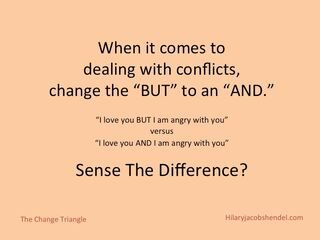Anxiety
Two Powerful Techniques to Lower Anxiety
A mind and body approach.
Posted August 10, 2021 Reviewed by Ekua Hagan
Key points
- Anxiety is a signal that core emotions like anger and sadness need to be expressed.
- Naming both sides of a conflict without trying to reconcile sides reduces anxiety.
- Identifying the core emotions that underlie anxiety reduces anxiety.
Anxiety is miserable. And most people reach for a pill or push it away to reduce it. But if we think of anxiety as a signal or as the tip of an iceberg, we can take steps to more permanently ease it. Anxiety tells us deep biological programs called core emotions have been triggered out of conscious awareness. These core emotions are designed by evolution to be felt and expressed. When we push them away, we feel anxiety.
Learning about core emotions and how they work in the mind and body is the most important thing we can do to change anxiety. Tools like the Change Triangle guide us to name our core emotions. Emotional conflicts can be more effectively dealt with when we can identify and work with the underlying divergent emotional experiences.
What follows is an explanation of two techniques I teach my psychotherapy clients and participants in the Emotions Education 101 class I teach:
Technique #1: Identify both sides of your conflict and speak them in your mind with an "and" instead of a "but." For examples:

I love you AND right now I’m so angry at you that I feel like I hate you.
I feel sad AND happy.
I am depressed and I know I am lucky in many ways.
I am lonely AND I prefer to be alone.
Summary: Name and validate when you have anxiety, look for any underlying conflicts, validate each side of the conflict with an "and" instead of a "but." Notice how that feels.
Technique #2: Name all of the underlying core emotions, imagining each emotion with lots of air and space in between each one.

Anxiety is caused by being overwhelmed by emotions and/or having many different core emotions at the same time. When the core emotions collapse on each other, they create one big blob of anxiety. But when we can name each and every emotion in the mix, and imagine each one separated from the other with lots of air and space in between each one, we feel better. By slowing down and identifying each and every core emotion under our anxiety, we feel calmer and clearer about what’s going on for us. For maximum relief, we must eventually process each core emotion one at a time.
Next time you have some anxiety, apply these two techniques. With practice comes relief plus a sense of mastery over your emotional mind and body.
References
Abbass, A. (2015). Reaching Through Resistance: Advanced Psychotherapy Techniques. Kansas City: Seven Leaves Press
Fosha, D. (2000). The Transforming Power of Affect: A Model for Accelerated Change. New York: Basic Books
Hendel, H.J. (2018). It’s Not Always Depression: Working The Change Triangle to Listen to the Body, Discover Core Emotions, and Connect to Your Authentic Self. New York: Random House


